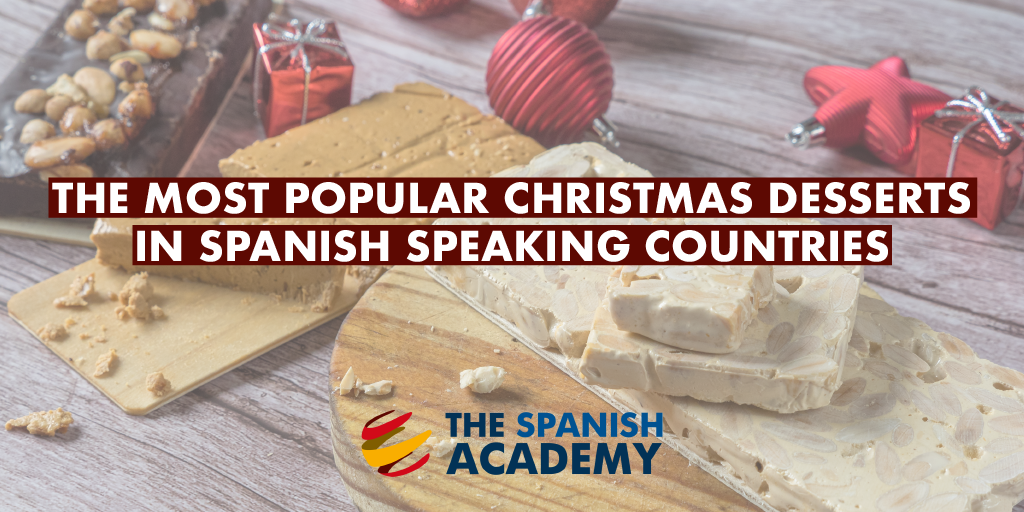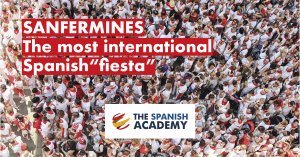One of the biggest festive moments of the year is around the corner. Hence, we cannot miss the opportunity to bring some deliciousness to your reading.
Throughout the Spanish-speaking world, we love cooking all sort of pastries and sweet delicacies for Christmas.
Not only in Spain you will find delicious “mantecados”. And not only Cuba is home to the irresistible “arroz con leche”, 🙂
The list is endless, so we have picked our favourites Christmas sweets and the most popular ones.
Sweet reading everyone!
Turrón
Turrón is all over the place during Christmas. In Spain and other Spanish speaking countries we eat them in very different forms. They are made of honey, sugar, toasted almonds or other nuts and shaped into rectangular tablets or other shapes. You may think of “turrón” as a Christmas nougat.
In Spanish it is pronounced as “turrón” ([tuˈron]. In Catalan they call it “torró” (pronounced [tuˈro]). It is also very popular all around Latin America, and Philippines! (pronounced [tuˈɾon] from the word “turon” in Tagalog).
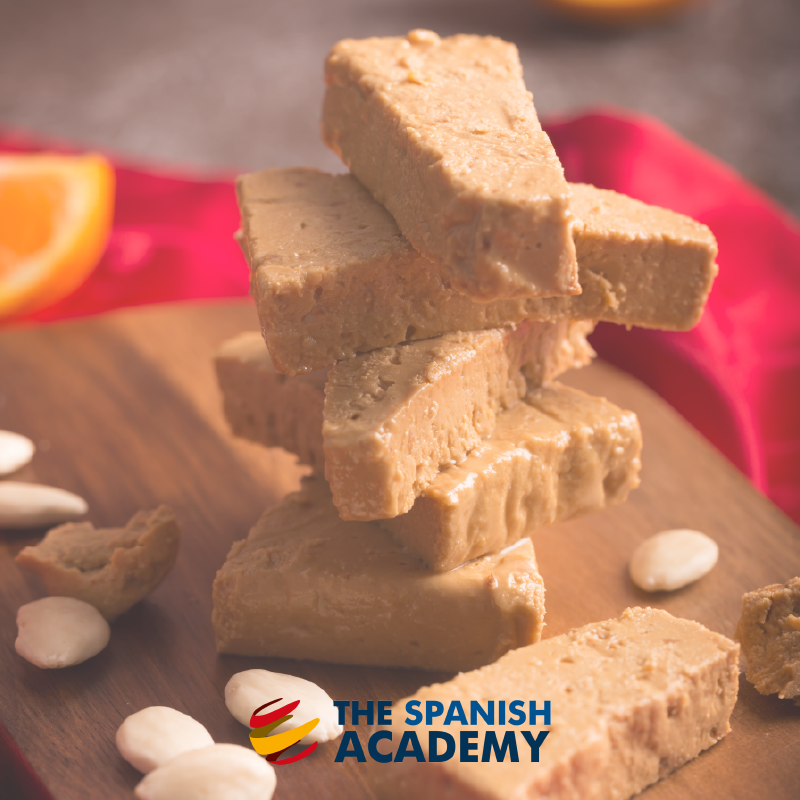
“Turrón blando” (soft “turrón”). The almonds are reduced to a paste, and all the ingredients together with some oil make it chewy and sticky. It is the favourite Christmas nougat among kids in Spain!
Turrón in Spain is often classified into 2 types:
- “Turrón duro” (hard “turrón”). The variety of Alicante, a mediterranean coastal city near Valencia. This type consists of a delicious compact block of whole almonds in a mass of eggs, honey and sugar.
- “Turrón blando” (soft “turrón”). The almonds are reduced to a paste, and all the ingredients together with some oil make it chewy and sticky. It is the favourite Christmas nougat among kids in Spain!
Besides these 2 main types, you may find other “turrón” bars that feature chocolate, marzipan, coconut, caramel, candied fruits, etc.
Polvorones
They are on every table in Spain during Christmas. These traditional holiday cookies contain almonds and have a crumbly texture. “Polvo” means powder in Spanish, and it refers to the sugar used for coating them. These delicious cookies will crumble to dust in your mouth as you eat them!
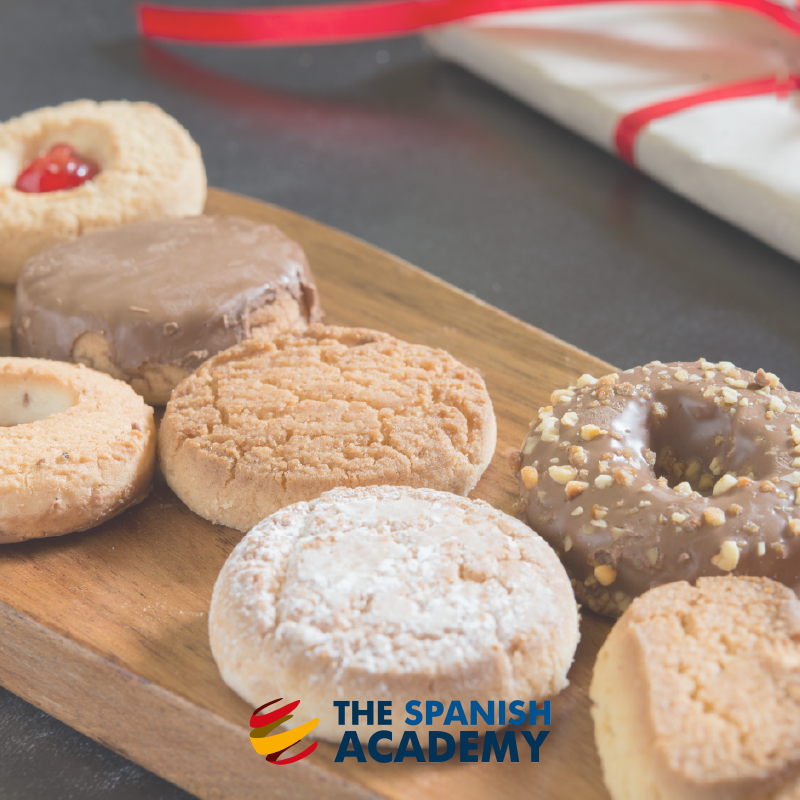
“Polvo” means powder in Spanish, and it refers to the sugar used for coating them.
Polvorones are a type of mantecado, a type of cookies made with “manteca” (Spanish word for pork lard). Though traditionally “manteca” is a must, people now use butter or margarines. You can enjoy veggie “polvorones” too !
A bit of history about the “polvorones”. During the Spanish Inquisition, polvorones were made with pork fat as a way to prove your Catholic faith. They would detect if Muslims or Jews were hiding in the regions of Southern Spain. When anyone declined eating them, they would face trial by the “inquisidores”. Certainly a controversial fact back in those times. Would you resist eating such tempting cookies?
Arroz con leche
Arroz con leche (or rice pudding in English). Given the popularity of this staple (rice), arroz con leche has a place in almost every Spanish speaking country.
Arroz con leche is a thick sweet concoction that’s simple to make and can please all the sweet teeth during Christmas gatherings. A few ingredients will be enough for a perfect creamy dessert. Milk, sugar, and rice are the main foods you need to make this dessert. In addition to these ingredients, cinnamon and condensed milk are often added. These comforting sweet layers of taste offer a perfect blend of flavours!
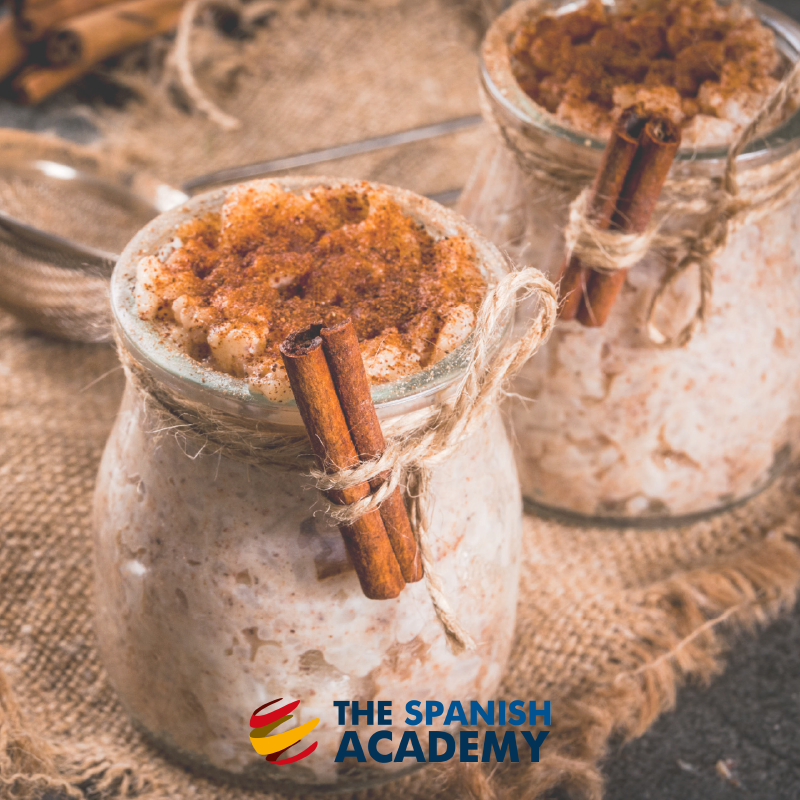
Arroz con leche is a thick sweet concoction that’s simple to make and can please all the sweet teeth during Christmas gatherings.
It is widely consumed in Spain and Colombia. People also add dry fruits or nuts to it. No matter the recipe or ingredients you wish to add on, you will for sure want to refill your “arroz con leche” bowls over and over.
Natilla
“Natillas” refer to a variety of custards and similar delicacies in Spanish-speaking countries. In Spain, it refers to a custard dish made with milk and eggs, like other European creams as crème anglaise. Yet, in Colombia this delicacy does not include eggs, and it is called “natilla”.
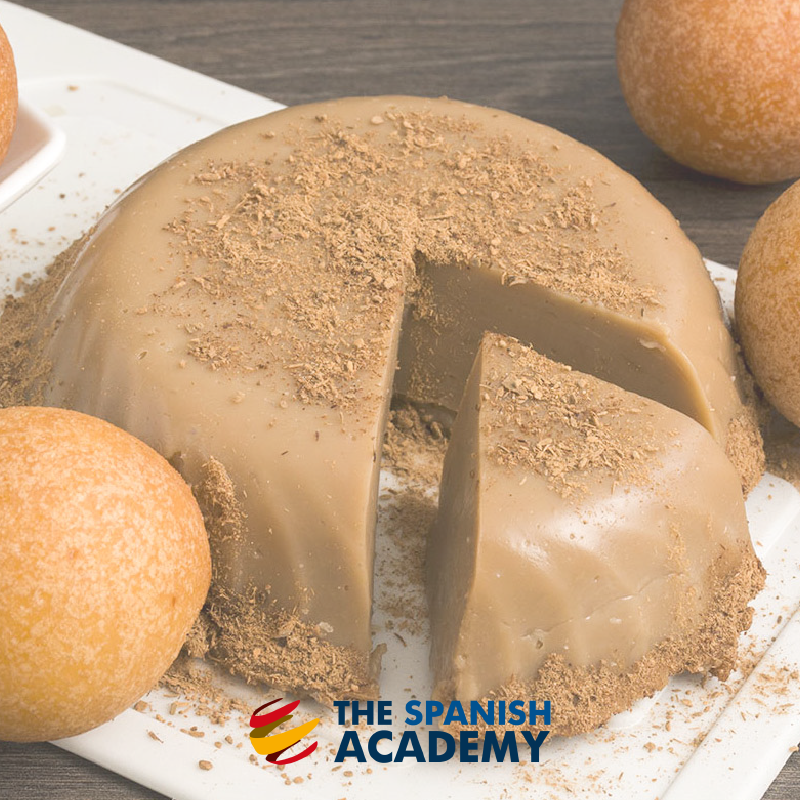
“Natillas” refer to a variety of custards and similar delicacies in Spanish-speaking countries.
“Natilla”, in Colombia, is a very popular dessert during the holidays. In fact, you will very likely find it everywhere during Christmas. In Colombia, you may find sweet or savoury versions of it. “Natilla” refers typically to a sweet custard paired with cinnamon, the savoury versions pair perfectly with buñuelos (fried dough fritters) and are also very popular.
Cocadas
“Cocada” is a traditional coconut candy or confectionery found in many countries of Latin America.
Mentioned as early as in the late nineteenth century in Peru, they are very popular in Argentina, Bolivia, Colombia, Chile, Dominican Republic, Mexico, Panama, Venezuela, and Ecuador. Usually oven baked, they are served at room temperature to provide the best chewy and soft texture.
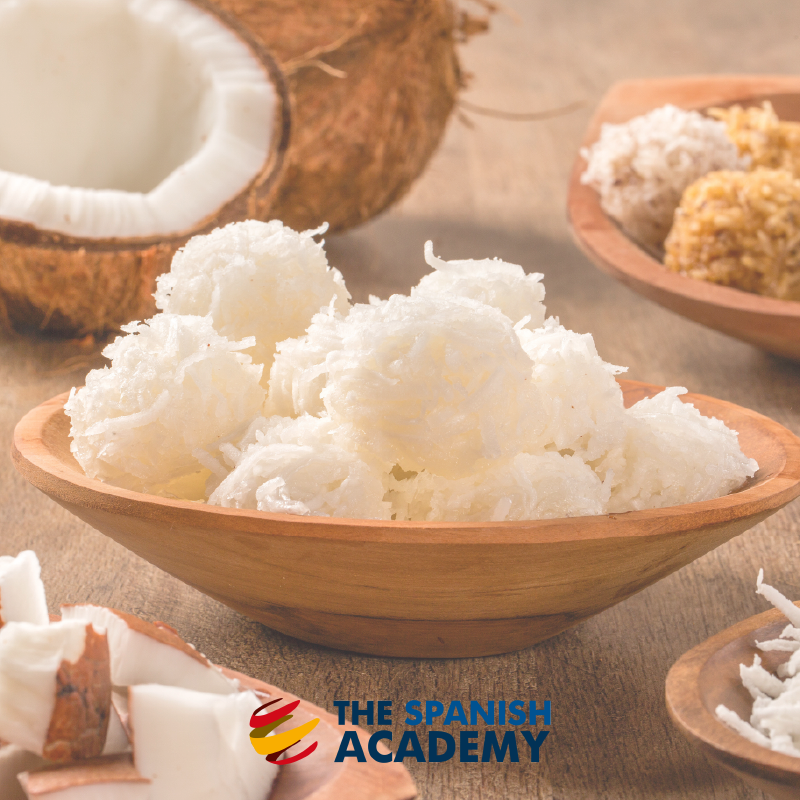
Cocadas are made with eggs and shredded coconut, and can come in a variety of colours due to the wide use of food colouring.
Cocadas are made with eggs and shredded coconut, and can come in a variety of colours due to the wide use of food colouring. However the traditional cocadas are golden brown. They are mainly garnished with almonds (either whole or chopped).
“Cocadas” recipes vary from country to country (from the typical hard and very sweet balls to the flan-like creamy textured ones).
Roscón de reyes
Often referred to as “Spanish kings’ cake”, it is an oval-shaped sweet yeasted bread, like a brioche. It is eaten on The Three Kings’ Day (el día de los Reyes Magos).
The Three King’s Day celebrates the Epiphany on January 6th. It is the real Christmas Day (celebration wise) for most Spaniards. Families gather for a feast, unwrap presents (brought by the Three Wise Men/Kings)… And of course enjoy this delicious dessert.

A little toy is added in the “roscón” and whoever cracks a molar on this little toy (often a little ceramic Christ) will get good luck for the coming year!
The “roscón de reyes” is usually sliced in half. It has a sweet whipped cream layer with chocolate or other sweet flavours. The “roscón” is topped with candied fruits, dried dates and a sugar coating. On top of it sits the crowns of the Three Wise Men (“los reyes magos”) who visited the baby Jesus in the manger.
A little toy is added in the “roscón” and whoever cracks a molar on this little toy (often a little ceramic Christ) will get good luck for the coming year! It is not the same luck for those who end up crunching on a dried fava bean. If you do find the fava bean, you have to buy the cake next Christmas.
Chocolate caliente
Probably the sweetest of all, and a very popular choice worldwide. However, it is important to remember how important chocolate has been in Latin American history, where some of the best cacao beans can be found.
Cacao has a long history in Latin America. It has been consumed as early as 400 B.C., and has become a favourite ingredient for desserts in every corner of the world.
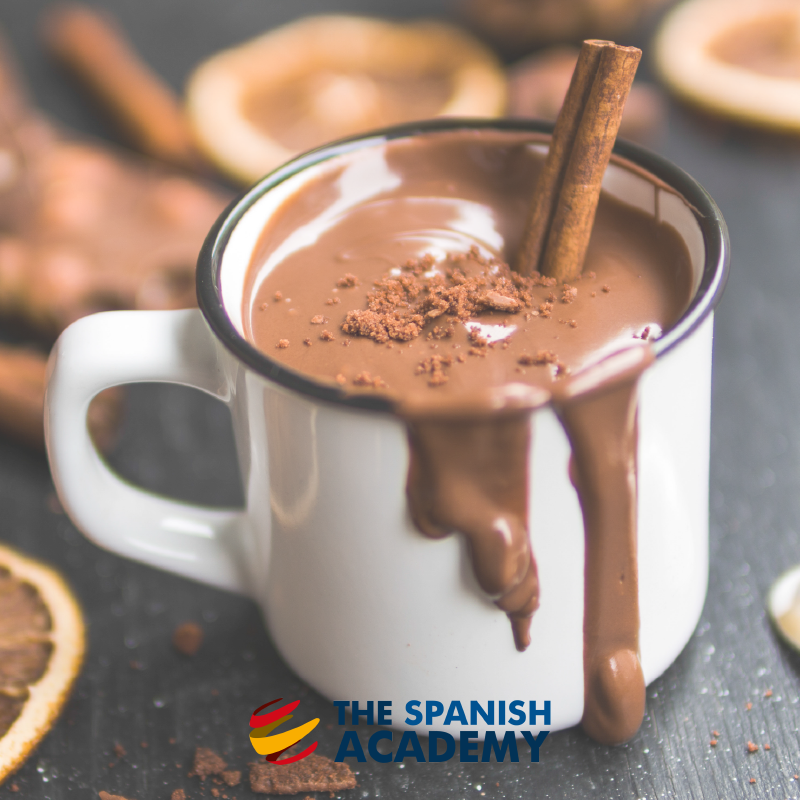
Hot chocolate is an all year favourite in Colombia.
Hot chocolate is an all year favourite in Colombia. It is rich in flavour, spicy and very festive. It is highly consumed for breakfast during Christmas holidays.
“Chocolate caliente” is the perfect drink for Christmas. Make sure you add nutmeg or cinnamon for an extra kick of deliciousness. And if you feel extra festive, take it together with some “polvorones” or “turrón”.
Alfajores
Alfajores are a traditional confection very popular all over Spanish speaking countries. It is usually prepared in the form of a small cylinder. You can buy them in Spain in every pastry shop in Christmas.
In Spain, the most traditional recipe of “alfajores” contains flour, honey, almonds and other spices, such as cinnamon.
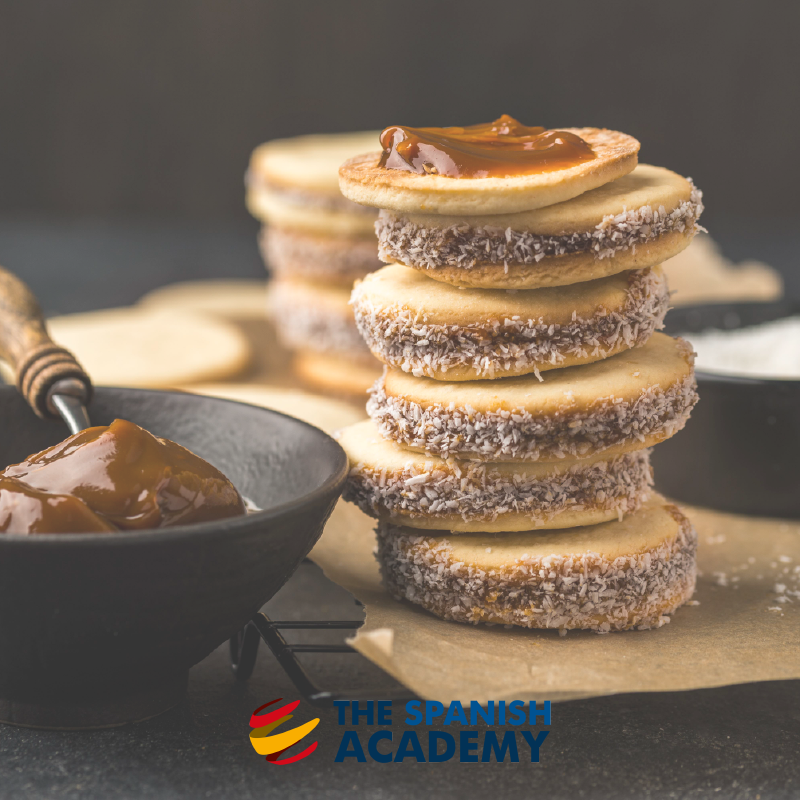
In Spain, the most traditional recipe of “alfajores” contains flour, honey, almonds and other spices, such as cinnamon.
The king filling in Argentina is “dulce de leche”.
Yet, the Latin American version differs from the Spanish “alfajores” since they are made with two round cookies with different sweet fillings between them. The king filling in Argentina is “dulce de leche”.
Alfajores can be covered with powder sugar (the traditional ones), glazed sugar, grated coconut or chocolate.

